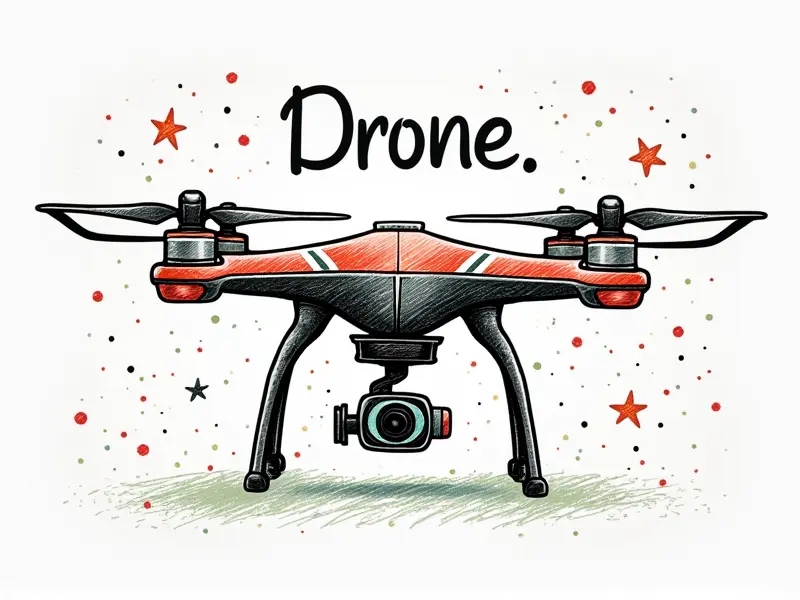How to secure an FPV camera

Top Tips for Securing Your FPV Camera
Securing your FPV (First Person View) camera is crucial to ensure optimal performance and prevent theft or damage during flights. Whether you're a beginner or an experienced pilot, these top tips will help safeguard your investment.
Best Practices for FPV Camera Safety
- Use Quality Mounting Hardware: Invest in durable mounting brackets that can withstand the rigors of flight. Look for hardware made from lightweight but strong materials like aluminum or carbon fiber.
- Secure Cables Properly: Ensure all cables are neatly routed and securely taped to prevent them from getting snagged during high-speed maneuvers.
- Protect the Camera Lens: Use protective covers for your camera lens, such as UV filters or clear plastic guards, to shield it from scratches and impacts.
Essential Security Measures for FPV Cameras
- Durable Housing: Opt for an FPV camera with a robust housing that can withstand crashes and rough handling. This will significantly reduce the risk of damage during flight operations.
- Anti-Theft Features: Consider cameras with built-in anti-theft features, such as tamper-proof screws or integrated locks to deter theft when storing your equipment.
- Weatherproof Design: Choose a camera that is weather-resistant and can withstand exposure to water and dust. This ensures reliable performance in various environmental conditions.
Quick Guide to Locking Down FPV Cameras
Locking down your FPV camera involves several key steps to ensure it remains secure during flight:
- Mount the Camera Firmly: Use high-quality mounting brackets and hardware to fix the camera securely in place.
- Route Cables Safely: Ensure all cables are routed away from potential snag points and taped down for added security.
- Install Protective Covers: Apply UV filters or clear plastic guards to protect the lens from damage.
Protect Your FPV Camera with These Tips
- Regular Maintenance Checks: Conduct routine checks on your camera setup before each flight to ensure everything is securely fastened and functioning correctly.
- Carry a Repair Kit: Always carry basic repair tools and spare parts in case of minor issues during flights or storage.
- Store Safely: Keep your FPV camera stored in a secure, dry place when not in use to prevent damage from environmental factors.
Secure Your FPV Camera in Minutes
Finding the right balance between security and ease of installation is crucial. Here’s how you can quickly lock down your FPV camera:
- Select Quick-Release Mounts: Opt for mounting brackets with quick-release features that allow for easy setup without compromising stability.
- Use Cable Ties: Secure cables using cable ties to prevent them from becoming loose or tangled during flight.
- Apply Protective Coatings: Coat your camera housing and lenses with protective sprays or apply clear tape for added durability.
Simpler Steps to Secure an FPV Camera
Securing your FPV camera doesn’t have to be complicated. Follow these simple steps for a secure setup:
- Firm Mounting: Use sturdy mounting brackets and hardware to ensure the camera remains firmly attached.
- Cable Management: Route cables neatly and tape them down to prevent tangling or snagging.
- Lens Protection: Install UV filters or protective covers on your lens to shield it from scratches and impacts.
How to Safeguard Your FPV Camera Easily
Safeguarding your FPV camera is essential for maintaining its performance and longevity. Here’s how you can do it easily:
- Select a Durable Camera Model: Choose an FPV camera with robust construction that can withstand crashes.
- Secure Mounting Brackets: Use high-quality mounting brackets to keep your camera firmly attached during flights.
- Protective Measures: Apply protective coatings or guards to shield the lens and housing from damage.
Prevent FPV Camera Theft and Damage
Theft and damage are common concerns for FPV camera owners. Here’s how you can prevent these issues:
- Use Anti-Theft Hardware: Install tamper-proof screws or locks to deter theft when storing your equipment.
- Durable Housing: Opt for a weatherproof and rugged camera housing that can withstand environmental challenges.
- Regular Maintenance: Conduct regular checks on your setup to ensure everything is secure and functioning properly.
Keep Your FPV Camera Safe in Flight
Maintaining the safety of your FPV camera during flights involves several key practices:
- Proper Mounting: Ensure your camera is securely mounted using high-quality brackets and hardware.
- Cable Management: Route cables neatly to prevent them from snagging or becoming loose during flight maneuvers.
- Protective Covers: Apply UV filters or protective guards to shield the lens from scratches and impacts.
Lock Down Your FPV Camera Today
Taking proactive steps to secure your FPV camera is essential for ensuring its longevity and performance. By following these tips, you can lock down your camera in minutes:
- Select Quality Mounting Brackets: Use durable brackets that provide a solid foundation for your camera.
- Rout Cables Safely: Route cables away from potential snag points and secure them with cable ties.
- Install Protective Gear: Apply UV filters or protective covers to safeguard the lens during flights.
Conclusion
Securing your FPV camera is a critical aspect of maintaining its performance and protecting it from damage. By following these tips, you can ensure that your camera remains secure and reliable throughout its lifespan. Whether you're a novice or an experienced pilot, taking the necessary precautions will help safeguard your investment and enhance your flying experience.

